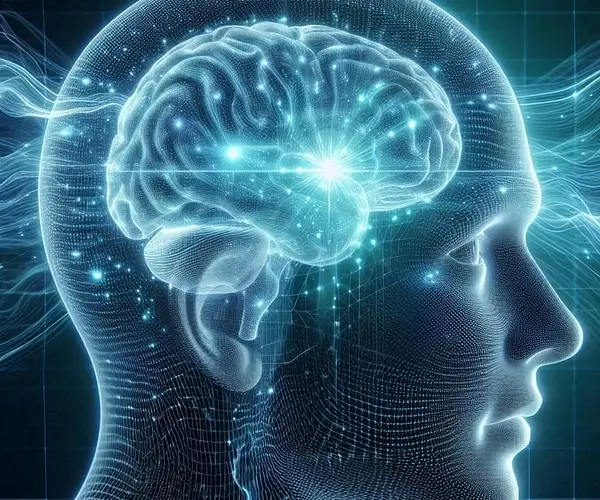Adult ADHD
ADHD (attention deficit hyperactivity disorder) is one of childhood’s most common neurodevelopmental disorders, affecting nearly 11% of US children between the ages of 2 and 17. Symptoms of ADHD tend to improve with age because many kids become better at self-regulating as they get older. But contrary to popular belief, ADHD doesn’t go away when a person becomes an adult; in fact, ADHD is considered a lifelong condition, with many individuals actually receiving a first diagnosis well into adulthood. In the United States, ADHD affects an estimated 10.5 million adults, or 4.4% of the adult population.
Who Gets Diagnosed with ADHD?
ADHD is a complex neurodevelopmental disorder that typically involves a combination of persistent attention problems with hyperactive and/or impulsive behavior. Neurodevelopmental disorders like ADHD start during the prenatal (before birth) developmental period, when the brain, the central nervous system, and its pathways are still being formed. This means that regardless of the age that an individual received a diagnosis, every adult with ADHD has had the condition since they were a child.
ADHD affects males and females equally, but most women with ADHD tend to be diagnosed later in life compared to their male counterparts, typically by their late 30s and 40s. Young girls are also diagnosed and treated less frequently than boys – the ratio of boys to girls with ADHD is about 9:1 (i.e., for every girl diagnosed with ADHD, nine boys receive a diagnosis). This difference occurs partly because boys usually display more disruptive symptoms (hyperactivity, aggressiveness, etc.), whereas girls tend to experience more intellectual symptoms (inattention, learning difficulties), making boys more likely to be referred for treatment by parents and teachers.
Common Signs and Symptoms of Adult ADHD
Signs and symptoms of ADHD in adults broadly resemble those of childhood ADHD, although their intensity tends to decrease over time for many individuals. Some adults, however, can experience severe symptoms that disrupt their daily functioning and productivity, especially if they’ve never received support for their ADHD.

Adults ADHD Symptoms Can Include:
Inattention
- Missing details or getting distracted easily
- Difficult getting started and/or completing tasks
- Difficulty focusing and retaining attention
- Poor planning
- Poor organizational and time management skills
- Hyperfocus
- Forgetfulness
- Feeling unmotivated or procrastination
- Problems at work
Impulsivity
- Mood swings
- Trouble coping with stress
- Relationship difficulties
- Taking excessively or interrupting other people frequently
- Low tolerance to frustration
- Restlessness or anxiety
- Being easily bored
- Substance misuse or addiction
- Trouble controlling emotions
Diagnosing Adult ADHD
Diagnosing ADHD in adults can be a difficult ordeal. For one, there is no single test or tool explicitly designed for diagnosing the condition, so healthcare providers must rely on information from multiple sources to arrive at a conclusion. ADHD also shares symptoms with other disorders, so it’s not uncommon for a person to receive an ADHD diagnosis on top of something else. In most cases, a primary care physician or mental health provider will dedicate at least two or more detailed interviews to assess an individual if they suspect ADHD. These interviews may include:
- A medical examination to rule out physical health conditions
- A detailed family history
- Detailed questions about your childhood and adolescence to determine whether you might have had undiagnosed ADHD as a child
- Standardized behavioral tests
- ADHD rating scales
Treatment for ADHD in Adults
The standard treatment for ADHD is a combination of therapy and medication; medication to regulate the brain at the neurological level and therapy to address specific challenges like lack of motivation and depression, as well as to learn coping skills to manage day-to-day symptoms.
ADHD is not caused by a poor diet or lifestyle factors, like sedentarism or excessive screen time. However, evidence shows that modifying your environment, particularly when it comes to healthy eating, moving more, and getting quality sleep, can greatly improve ADHD symptoms.

Healthy eating: studies show that people with ADHD tend to have naturally lower levels of iron, zinc, and magnesium. Eating a diet rich in these nutrients and taking a high-quality dietary supplement designed to address focus and concentration can help fill nutritional gaps and support healthy cognitive function.
Moving more: research suggests that exercising for as little as 30 minutes a day has the potential to improve memory, improve executive functioning, and boost dopamine production, which helps with attention and thinking.
Quality sleep: Restful, restorative sleep is a powerful tool for improving symptoms of ADHD, particularly mood swings and inattention. If you have trouble sleeping at night, taking a melatonin supplement has been shown to help people fall asleep faster and stay asleep longer.


